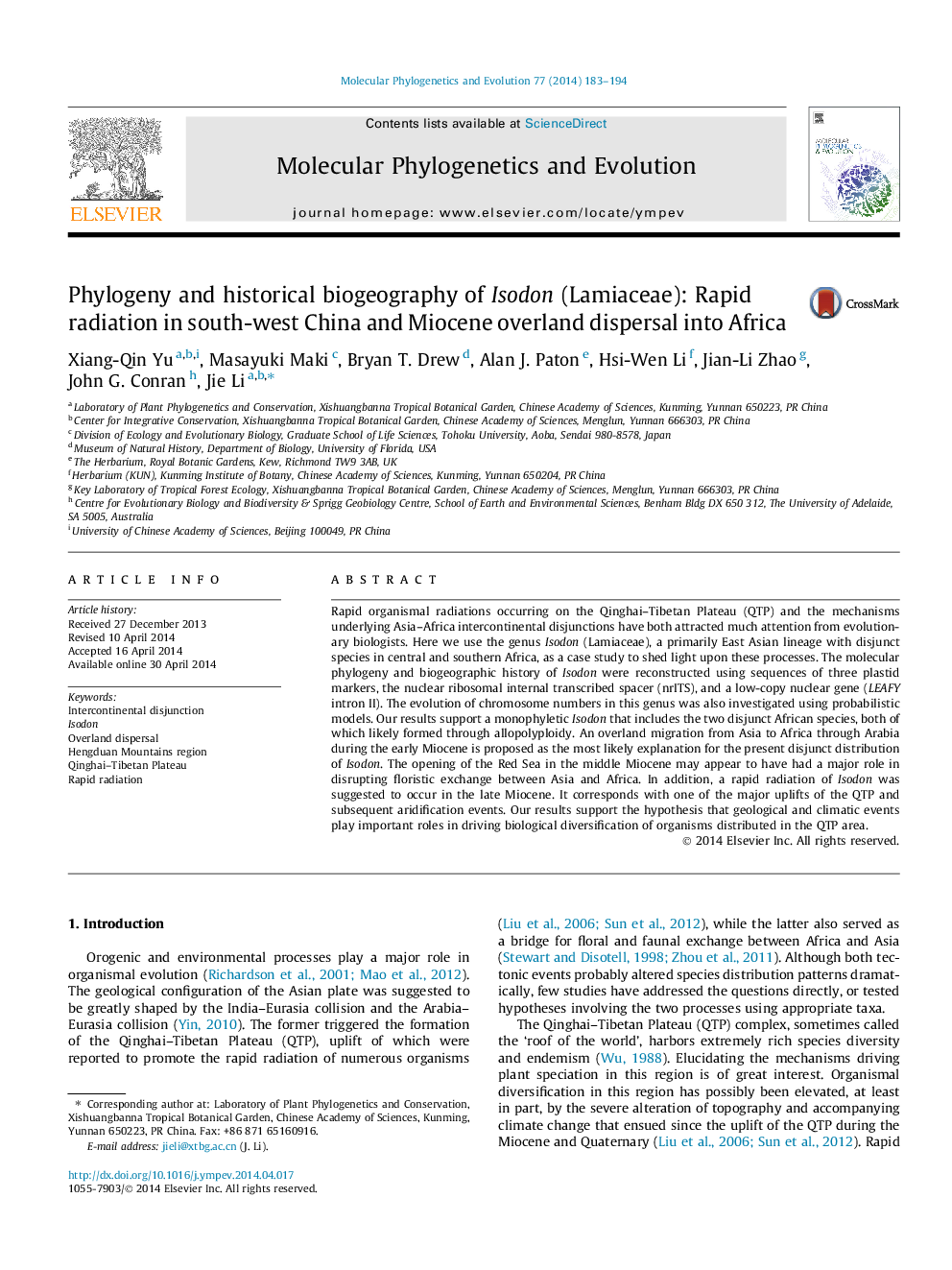| کد مقاله | کد نشریه | سال انتشار | مقاله انگلیسی | نسخه تمام متن |
|---|---|---|---|---|
| 5919475 | 1570818 | 2014 | 12 صفحه PDF | دانلود رایگان |

- Isodon including the two African endemic species was monophyletic.
- Isodon comprised four well-supported clades.
- Isodon was inferred to have originated in Asia in the late Oligocene.
- Isodon colonized Africa in the early Miocene via overland migration.
- Rapid radiation of Isodon might be associated with the uplift of the QTP.
Rapid organismal radiations occurring on the Qinghai-Tibetan Plateau (QTP) and the mechanisms underlying Asia-Africa intercontinental disjunctions have both attracted much attention from evolutionary biologists. Here we use the genus Isodon (Lamiaceae), a primarily East Asian lineage with disjunct species in central and southern Africa, as a case study to shed light upon these processes. The molecular phylogeny and biogeographic history of Isodon were reconstructed using sequences of three plastid markers, the nuclear ribosomal internal transcribed spacer (nrITS), and a low-copy nuclear gene (LEAFY intron II). The evolution of chromosome numbers in this genus was also investigated using probabilistic models. Our results support a monophyletic Isodon that includes the two disjunct African species, both of which likely formed through allopolyploidy. An overland migration from Asia to Africa through Arabia during the early Miocene is proposed as the most likely explanation for the present disjunct distribution of Isodon. The opening of the Red Sea in the middle Miocene may appear to have had a major role in disrupting floristic exchange between Asia and Africa. In addition, a rapid radiation of Isodon was suggested to occur in the late Miocene. It corresponds with one of the major uplifts of the QTP and subsequent aridification events. Our results support the hypothesis that geological and climatic events play important roles in driving biological diversification of organisms distributed in the QTP area.
Journal: Molecular Phylogenetics and Evolution - Volume 77, August 2014, Pages 183-194